10 Famous Oil Paintings that Changed the World of Art
From a means of communication to religious expression to the portrayal of human emotions and experience, oil paintings on canvas have served not only as creative expressions but also as stories representing entire eras! They depict not only the painting styles, art movements, culture, and the milieu of an age but also the mindset of the people of that age.
Whether it is the anxiety of the modern age depicted by Edvard Munch in The Scream or leisure and escapism among people portrayed in Georges Seurat’s A Sunday Afternoon on the Island of La Grande Jatte, you can perceive the thoughts and attitudes of the people of that age in the oil paintings.
Perhaps… maybe this is why the beauty of a handcrafted oil painting is more appreciated for preserving our most beautiful memories than photographs despite their highly advanced features. They capture not only memories, but also the essence of the memories!
Let’s explore some world-famous oil paintings and dive deeper into the brushstrokes on the canvas!
Mona Lisa by Leonardo da Vinci
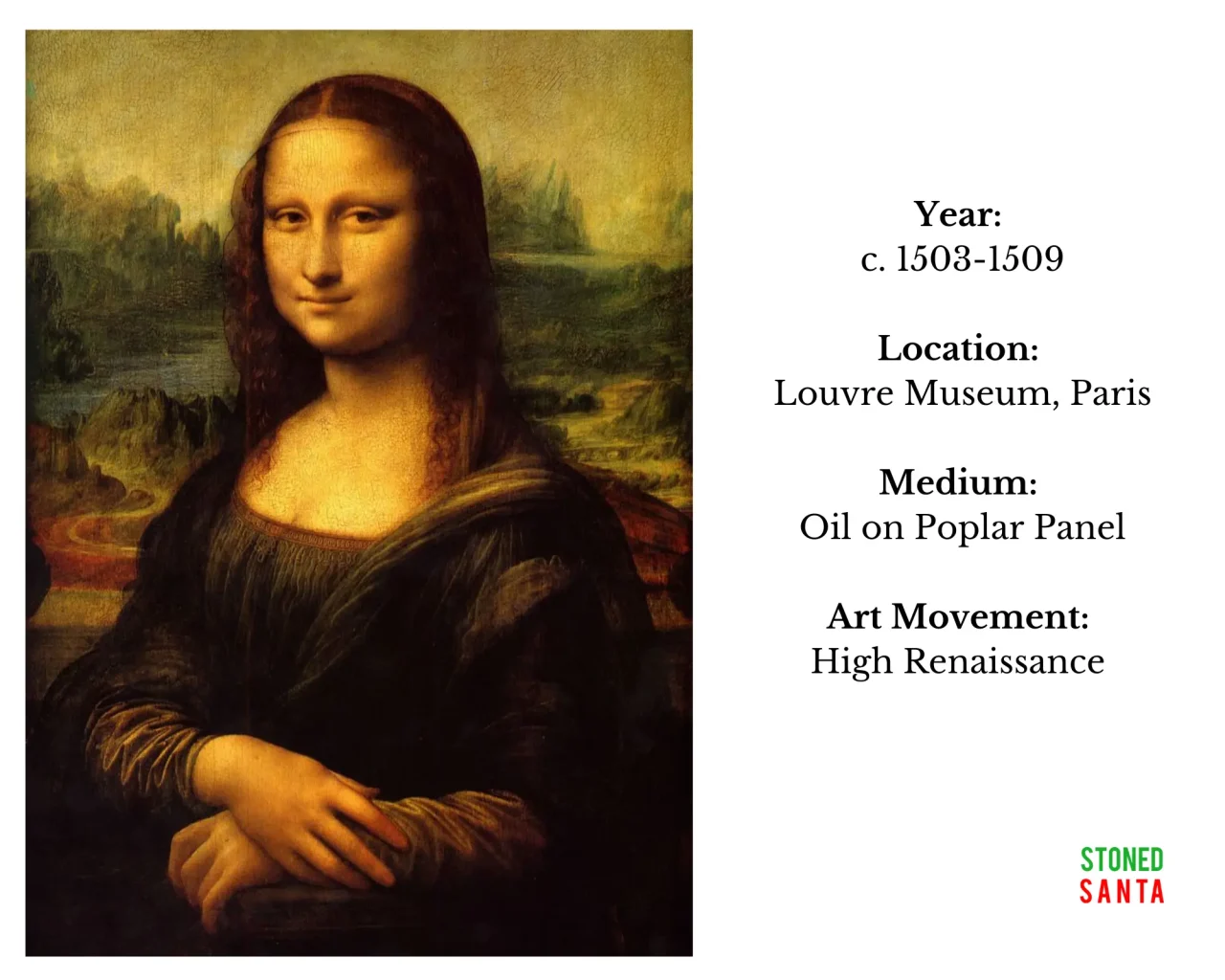
The apex of creative excellence that continues to intrigue the viewers with its captivating smile. Yes! ‘Mona Lisa’ it is! The oil painting where the sitter’s identity has been subjected to much debate and speculation.
While some scholars have suggested her to be Lisa del Giocondo, the wife of a Florentine merchant, others have guessed it to be Caterina, Leonardo’s mother or even Leonardo’s self-portrait…the mystery continues.
But that is not all that elevates its fame. The painting signifies Leonardo’s skilful use of sfumato, which involves gradual blending and fine shading to create lifelike emotion. This technique, along with observations of female anatomy, folded fabrics, delicate veil, sensuous curves of her hair and the sombre valleys and rivers in the background, makes the Mona Lisa seem so real.
Mona Lisa is also the first portrait to showcase the sitter in front of an imaginary landscape and the first use of aerial perspective.
The Starry Night by Vincent Van Gogh
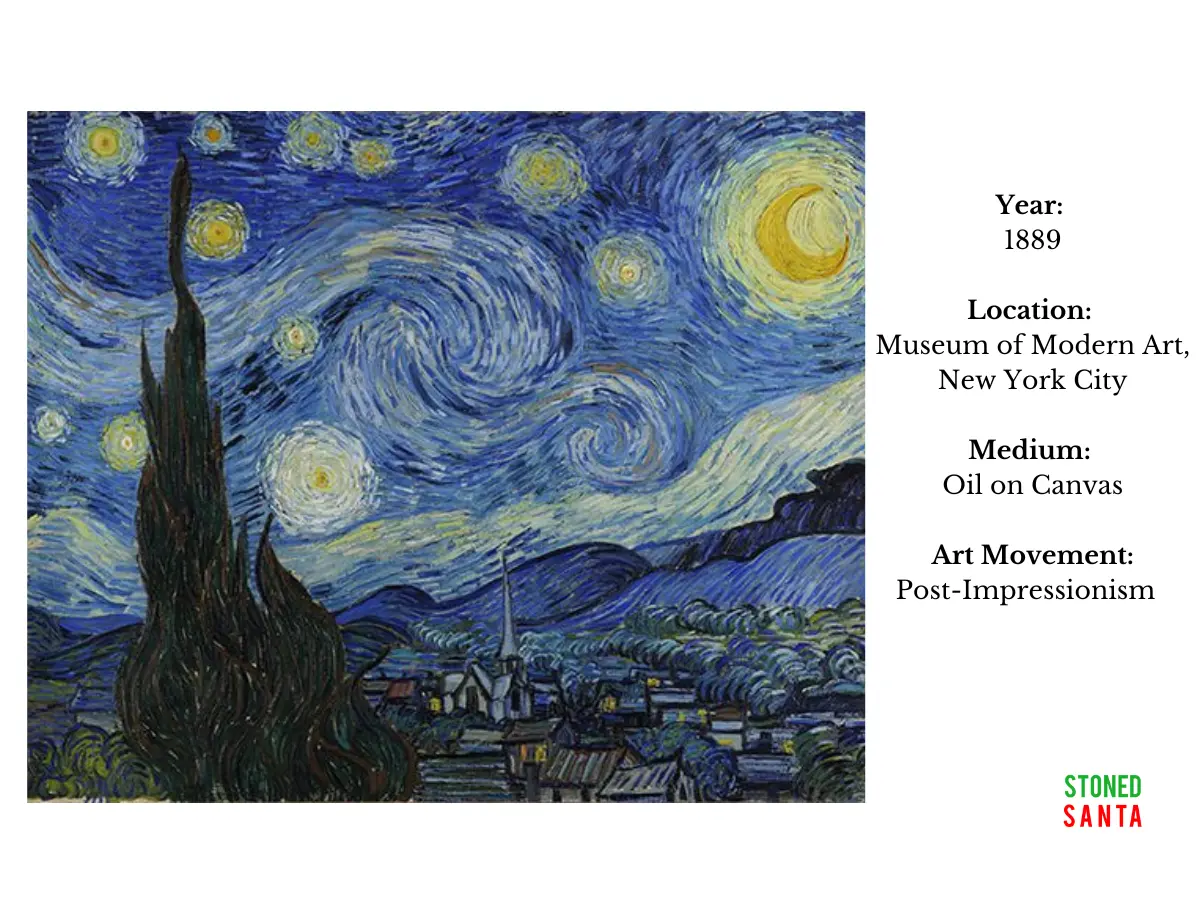
One of the most renowned paintings in Western Art, Van Gogh’s Starry Night is a luminous oil on canvas that was created during his stay at the Paul-de-Mausole asylum in France, several months after having suffered from a mental breakdown where he had even cut his own ear with a razor.
During his stay at the asylum, he witnessed several bursts of productivity along with moods of anguish. Van Gogh preferred depicting his observations on the canvas.
Likewise, The Starry Night portrays the night sky over the Province, wherein the whirling view of the sky reflects his turbulent emotions and edifying thoughts along with his appreciation of nature and its serene beauty.
The painting is heavily inspired by post-impressionism and signifies the use of swirling brushstrokes, vigorous lines and contrasting colours.
Girl with the Pearl Earring by Johannes Vermeer
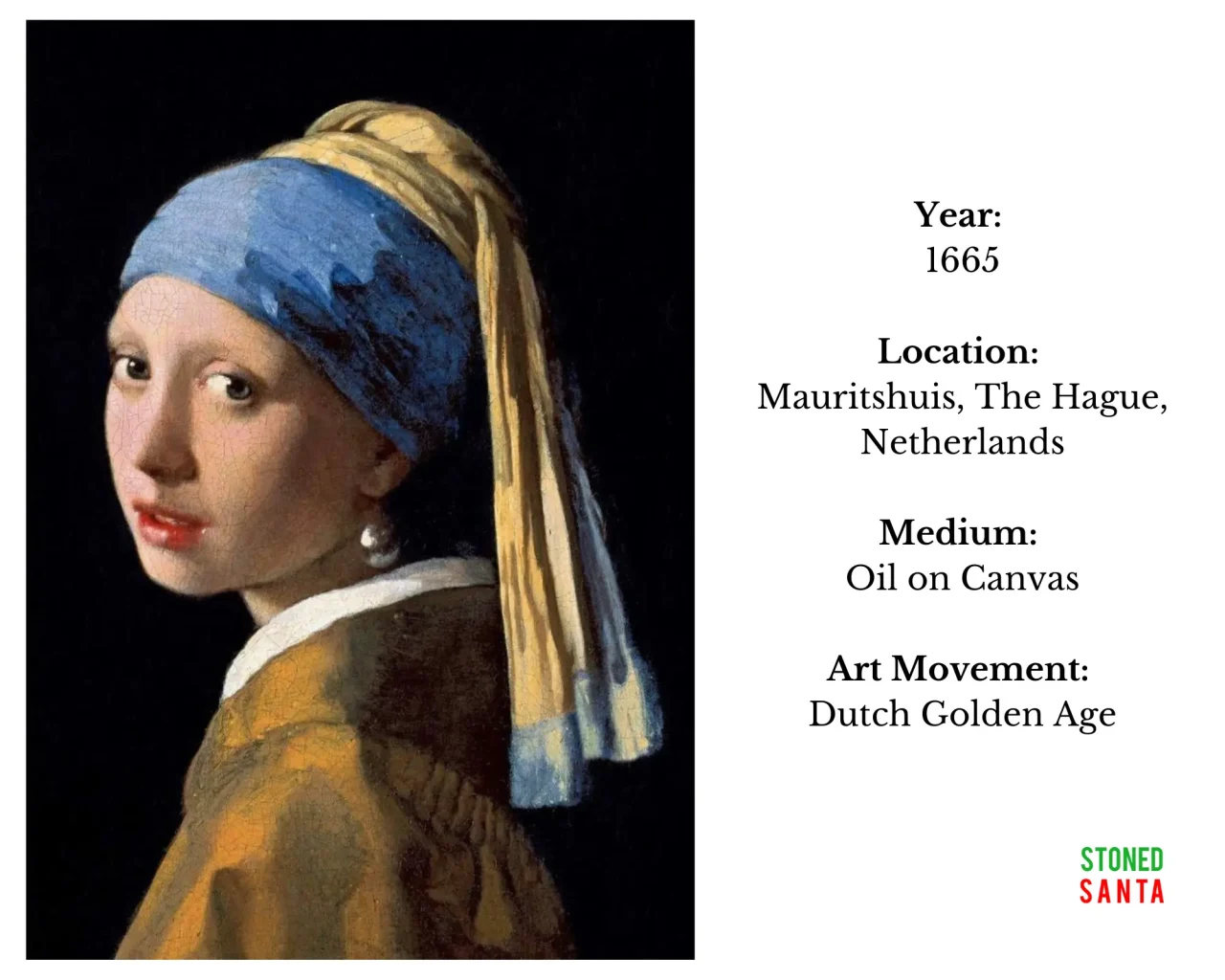
Heard of ‘Mona Lisa of the North’? Yes, Johannes Vermeer’s Girl with a Pearl Earring is referred to be the one because of the mysterious identity of the girl and her enigmatic expression.
However, this painting is not a formal portrait but a Dutch genre called ‘tronie’, highlighting a headshot with lively physiognomy.
Apart from the matched colour palette and refined brushwork, the oil painting is famous for its soft eyes, pearl earrings and the intense gaze of the girl, evoking an elegant yet mysterious appeal.
The Persistence of Memory by Salvador Dalí
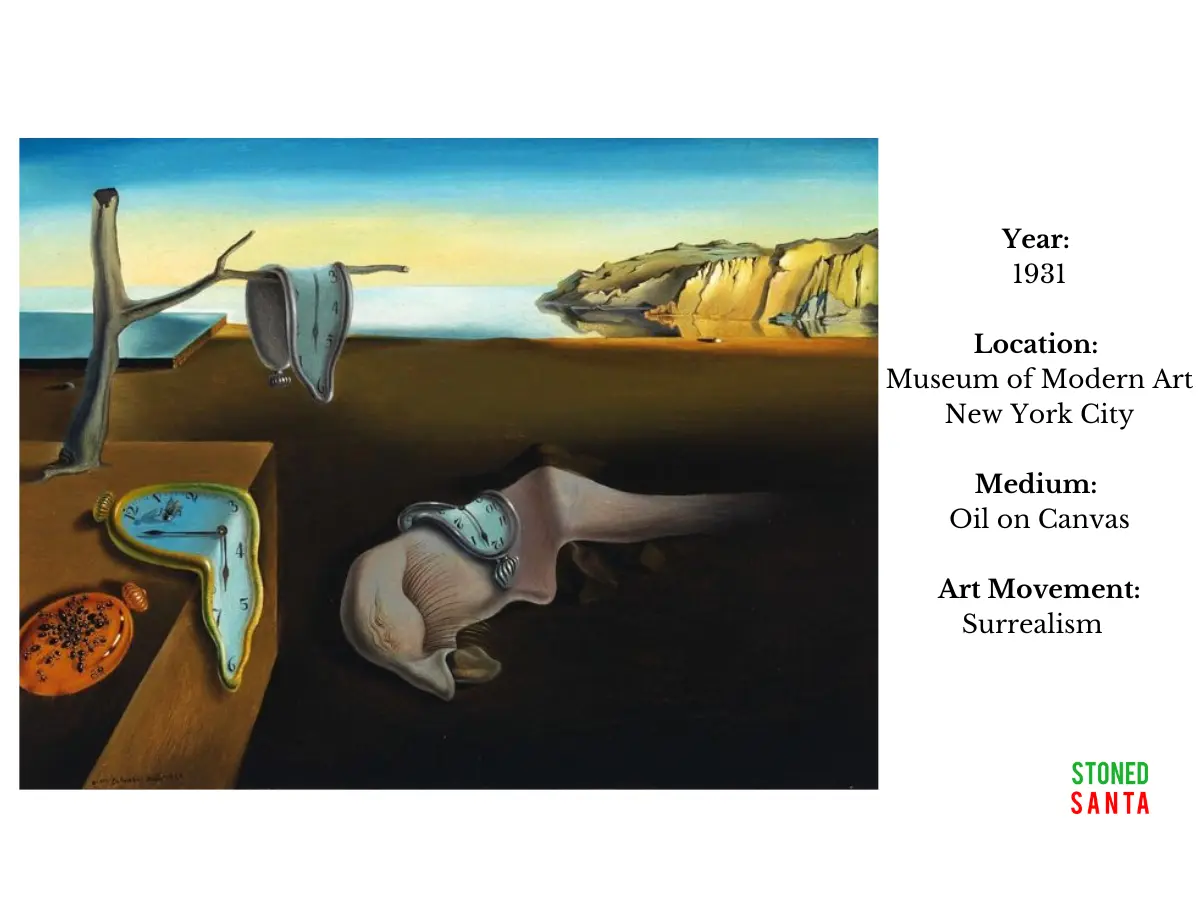
If you believe that a painting is only restricted to canvas and brush, you need to explore the artworks by Salvador Dali, for whom art was an exploration of the subconscious mind and a journey across the fantastical corridors of thoughts.
Although trained in Cubism and Impressionism at the Royal Academy of Fine Arts of San Fernando in Madrid, Dali dived into the unchartered waves of Surrealism, a movement led by Andre Breton and an antidote to the rationalism and objectivity of Enlightenment that had smothered creativity.
This fascination with the surreal dreams and the subconscious thoughts inspired Dali to create The Persistence of Memory.
In the painting, the melting clock symbolises the subjectivity and fluidity of time between past, present and future in a dreamscape. The landscape in the painting signifies Dali’s memory of the coastline of his native place in Catalonia, Spain.
Dali claimed that he used ‘the usual paralysing tricks of eye-fooling’ to evoke confusion and reject the world of reality completely.
The Scream by Edvard Munch
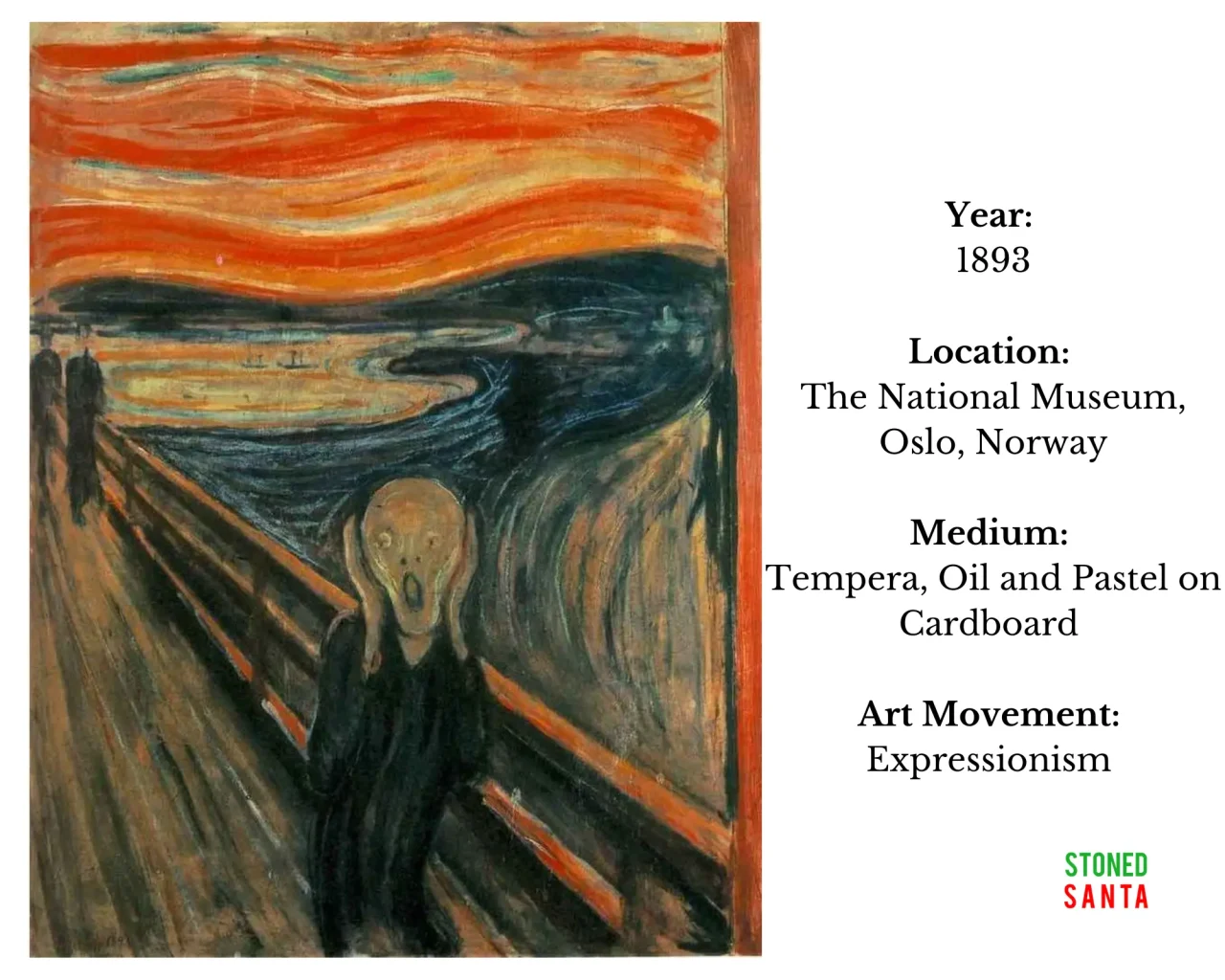
Want to gain a glimpse of the mind of any age, go to the art and paintings of that age!
Yes, just as the paintings of Leonardo da Vinci evoked self-control and serenity of the age of Renaissance through his paintings like the Mona Lisa, Munch portrayed the uncertainty and anxiety of the modern age so vividly in his oil painting, The Scream.
While Munch designed four different versions of The Scream, each one evokes the inner turmoil and existential dread he personally experienced having heard a sharp scream passing through nature while walking with his friends.
In the painting, the wavy portrayal of the sky and water in distorted form and vivid hues convey a strong sense of disorientation, a key characteristic of Expressionism.
Napoleon Crossing the Alps by Jacques-Louis David
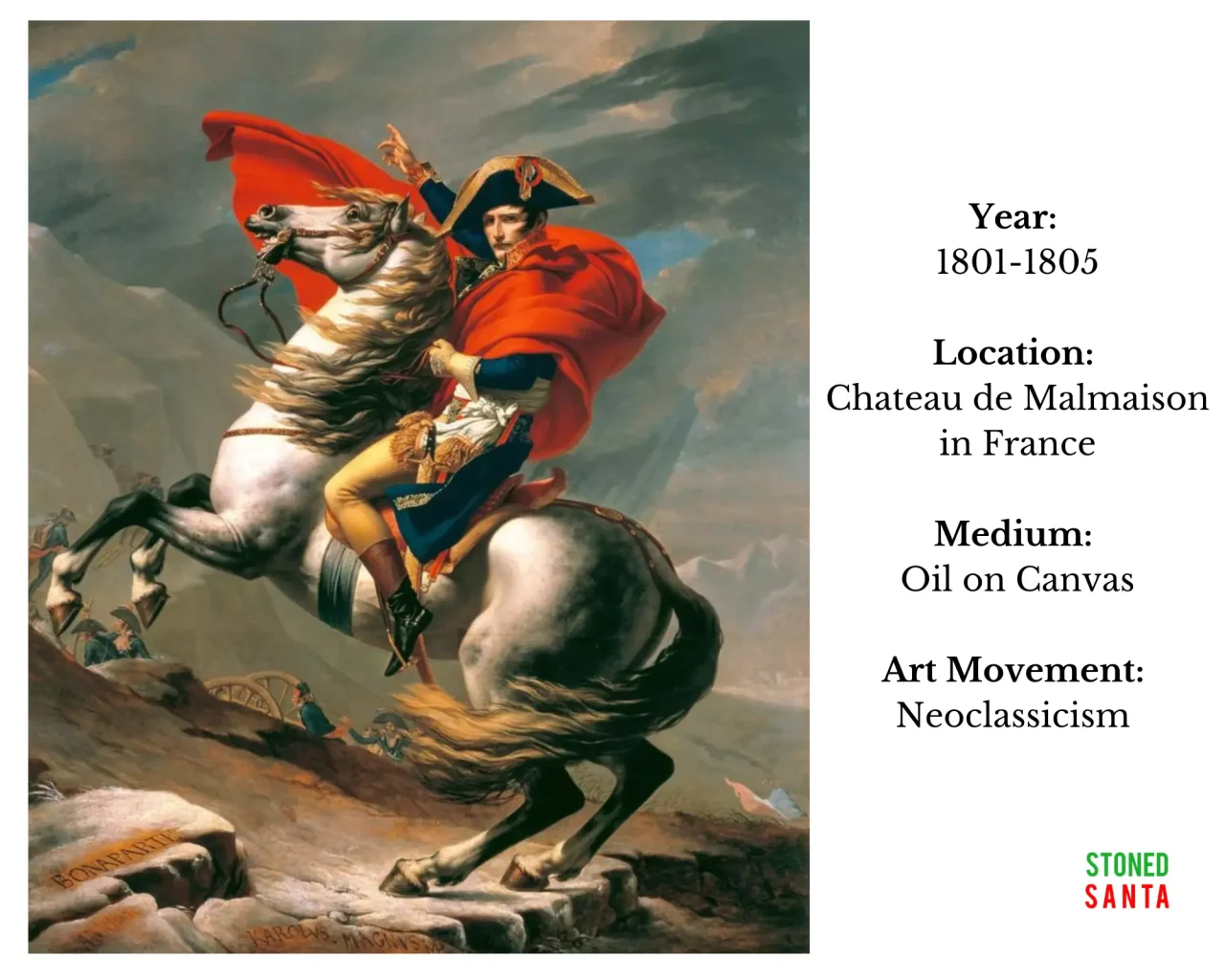
Painted in commemoration of Napoleon’s campaign across the Alps in 1800, particularly while crossing the Great Bernard Pass, Napoleon Crossing the Alps by Jacques-Louis David signifies his military courage.
A fun fact: David created five versions of the painting between 1801 and 1805! The first version was commissioned by Charles IV, King of Spain, during the exchange of gifts between Spain and France to restore the relationship between the two countries. The portrait was to be hung in the Royal Palace of Madrid.
The second and third versions were commissioned by Napoleon himself to establish his military strength and power. The fourth version was commissioned by the Republic of Cisalpine and aimed at reinforcing control of Italy by Napoleon, while the last version aimed to acknowledge David’s artistic accomplishments.
These four versions are displayed at the Belvedere Museum, Palace of Versailles, Kunsthistorisches Museum and Walker Art Gallery.
Although Napoleon crossed the Alps on a mule and adorned a less glamorous attire, his portrayal with a muscular horse and glamorous attire in the painting emphasises the courage, prowess and authority of Napoleon, thereby making this oil painting a strong symbol of heroism and emphasising the legendary status of Napoleon.
Despite the portrayal of an event from history, the painting conveys a timeless conception of man controlling power over himself and the natural world, which further elevates the popularity of the painting.
A Sunday Afternoon on the Island of La Grande Jatte by Georges Seurat
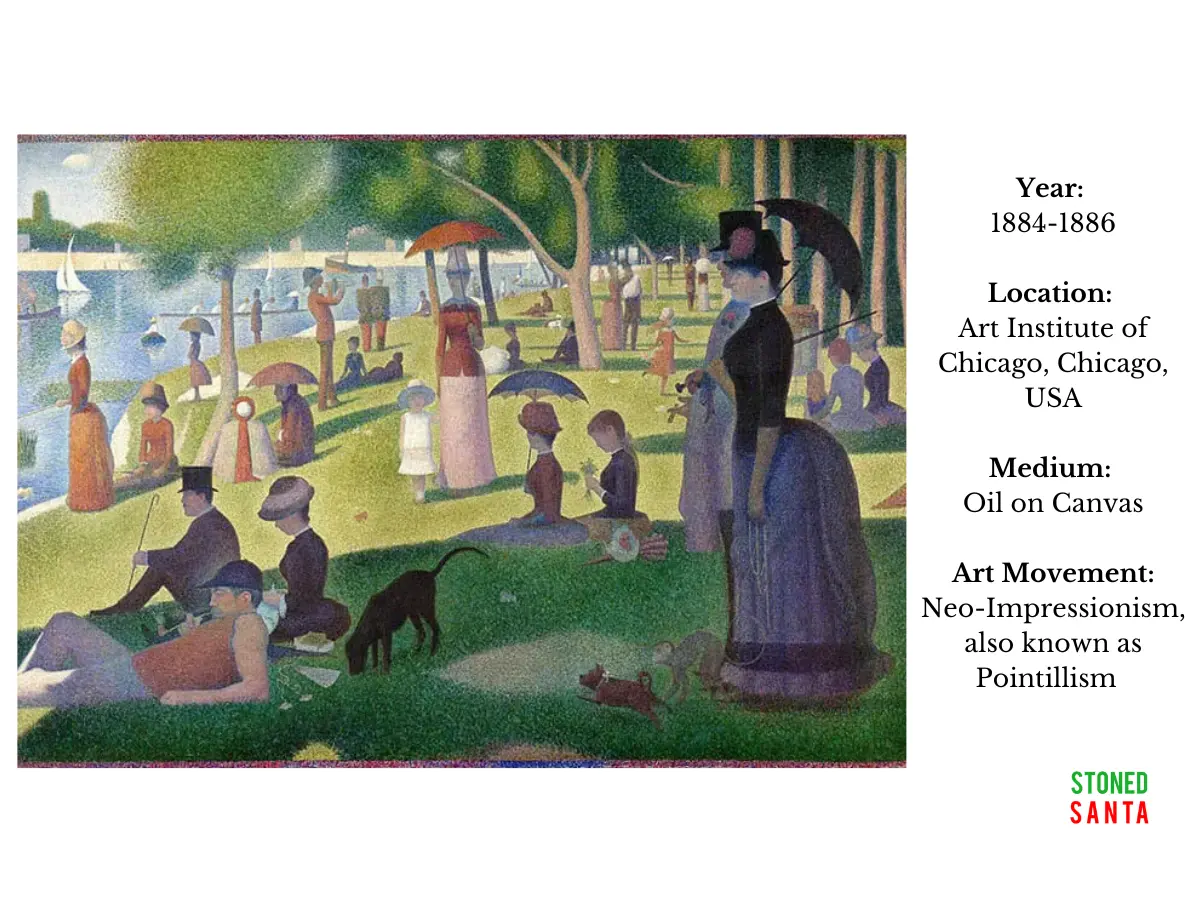
The highlight of Seurat’s A Sunday Afternoon on the Island of La Grande Jatte is its ambiguities. The painting portrays the upper- and middle-class Parisians on a day of leisure at La Grande Jatte, located near Paris.
At one end, the painting shows the celebration of the idyllic pleasures of life on a warm spring day; on the other side, it also counterintuitively demonstrates a deep sense of desolation. The men and women in the painting appear frozen in time, detached from one another, and also showcase the mindset of the modern age.
Apart from the imagery portrayed in this painting, the key highlight of this work is the use of Pointillism, a technique involving the use of small dots of colours to create an image. The optical mixture of unified and vivid colours directly captivates the viewers’ attention.
The Last Supper by Leonardo da Vinci
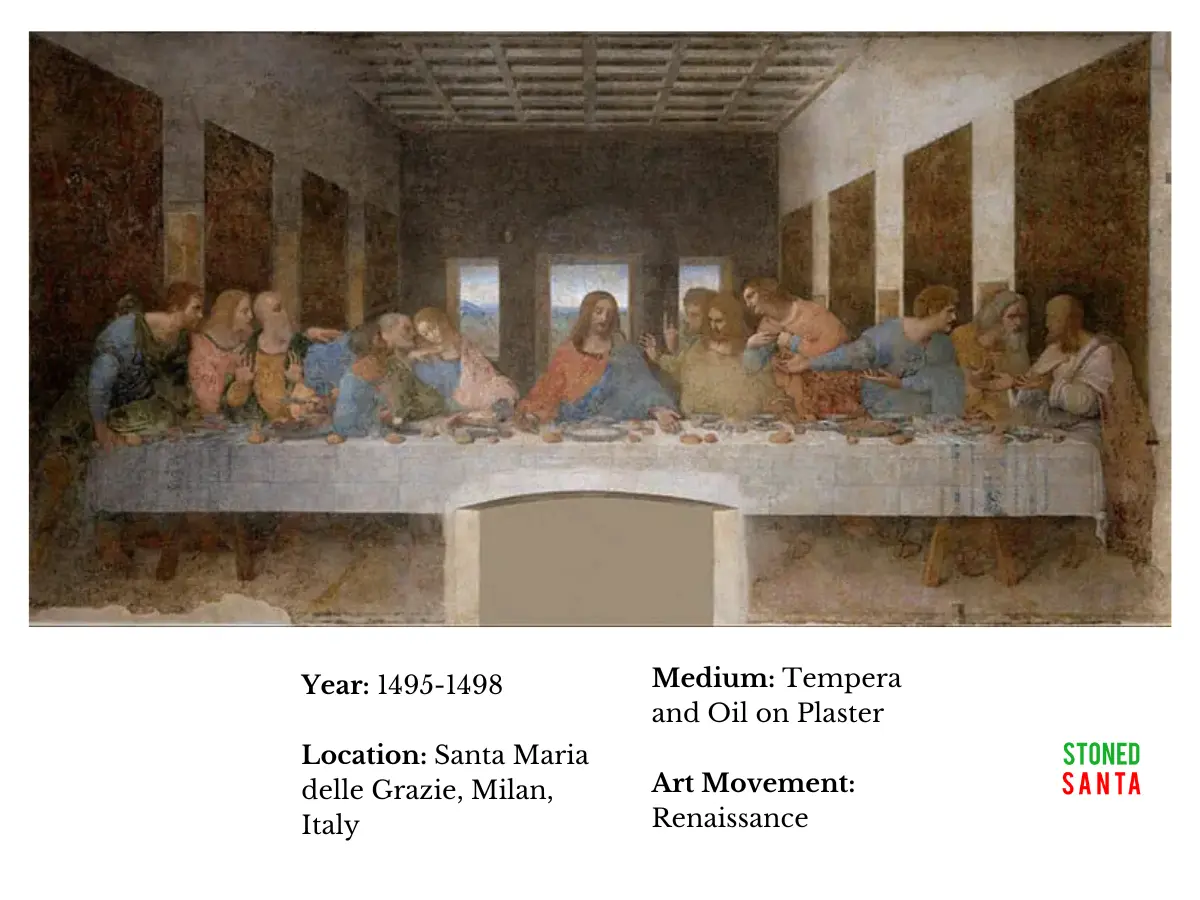
The oil painting was commissioned by the Duke of Milan, Ludovico Sforza, and portrays the scene where Jesus reveals that one of the apostles will betray him.
Unlike the frescoes painted on wet plaster for longevity during the Renaissance, The Last Supper was painted on a dry wall with oil and tempera for Leonardo’s aspiration to achieve greater precision and luminosity.
However, this experimental technique by Leonardo made the painting highly prone to deterioration, discolouration, and flaking, which is complicated for restoration.
While Leonardo took three years to complete, the masterpiece has undergone decades of restoration. At one end, the painting demonstrates Leonardo’s perception of the scene and his focus on drawing the viewers’ attention to the centre of the frame where he positioned Jesus with his apostles reacting in different emotions to His revelation. On the other, it showcases Leonardo’s artistic genius, vision and creativity.
The endeavours and time dedicated to preserving The Last Supper highlight its importance to the history of art, human creativity and Leonardo’s skill of capturing human expressions that have transcended decades.
Guernica by Pablo Picasso
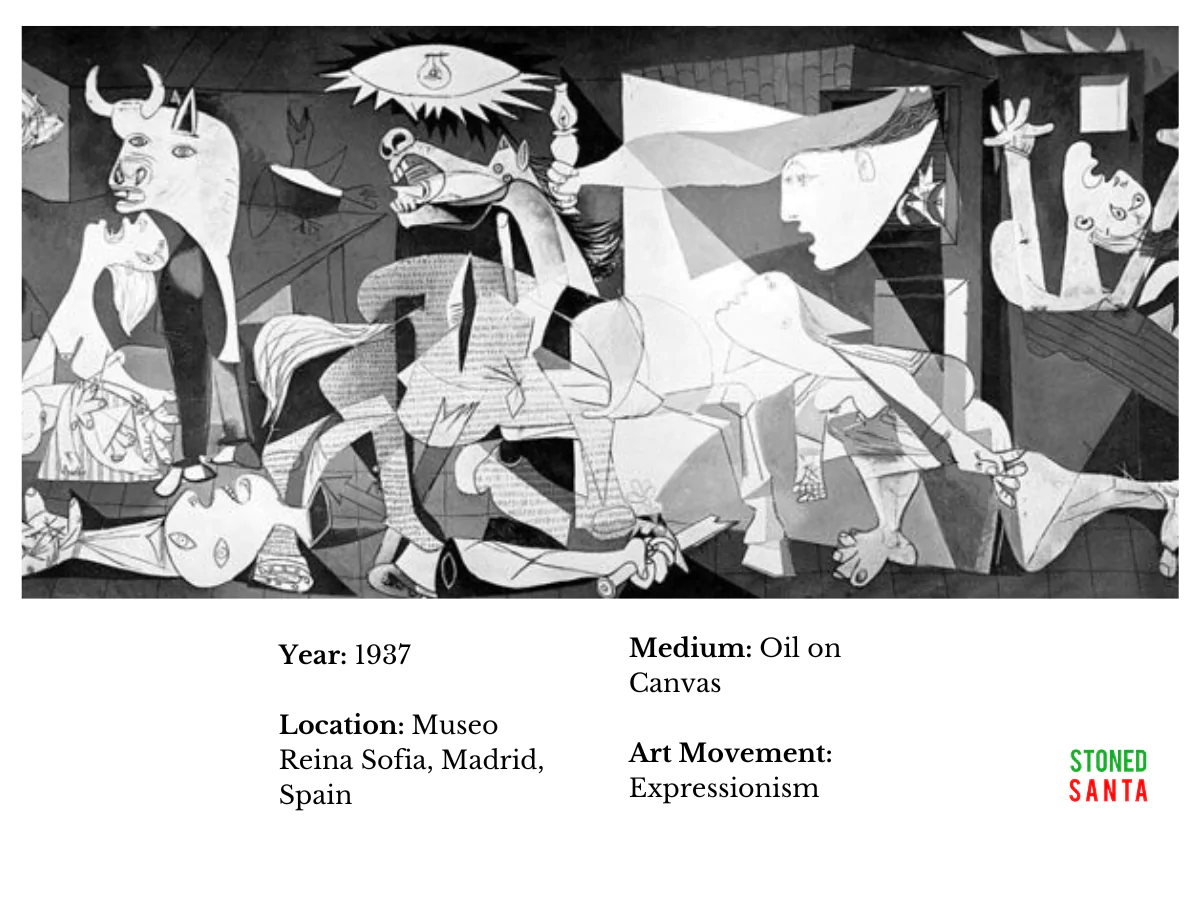
If you believe that art is only for décor and beautification, you must explore Guernica by Pablo Picasso, that created the most powerful political statement by portraying the devastation of the Basque town of Guernica by the Nazi’s shocking casual bombing during the Spanish Civil War.
The painting portrays the tragedies of War and the sufferings inflicted upon innocent civilians, which have elevated the status of this artwork to an anti-war symbol and an embodiment of peace.
The painting played a major role in bringing the War to the world’s attention.
The composition of the painting involving distorted and semi-abstracted bodies, dismembered body parts, sharp angular lines, and overriding visual order evokes a sense of chaos and confusion, highlighting the violence during the War, further highlighting the political significance of the painting.
The Arnolfini Portrait by Jan Van Eyck
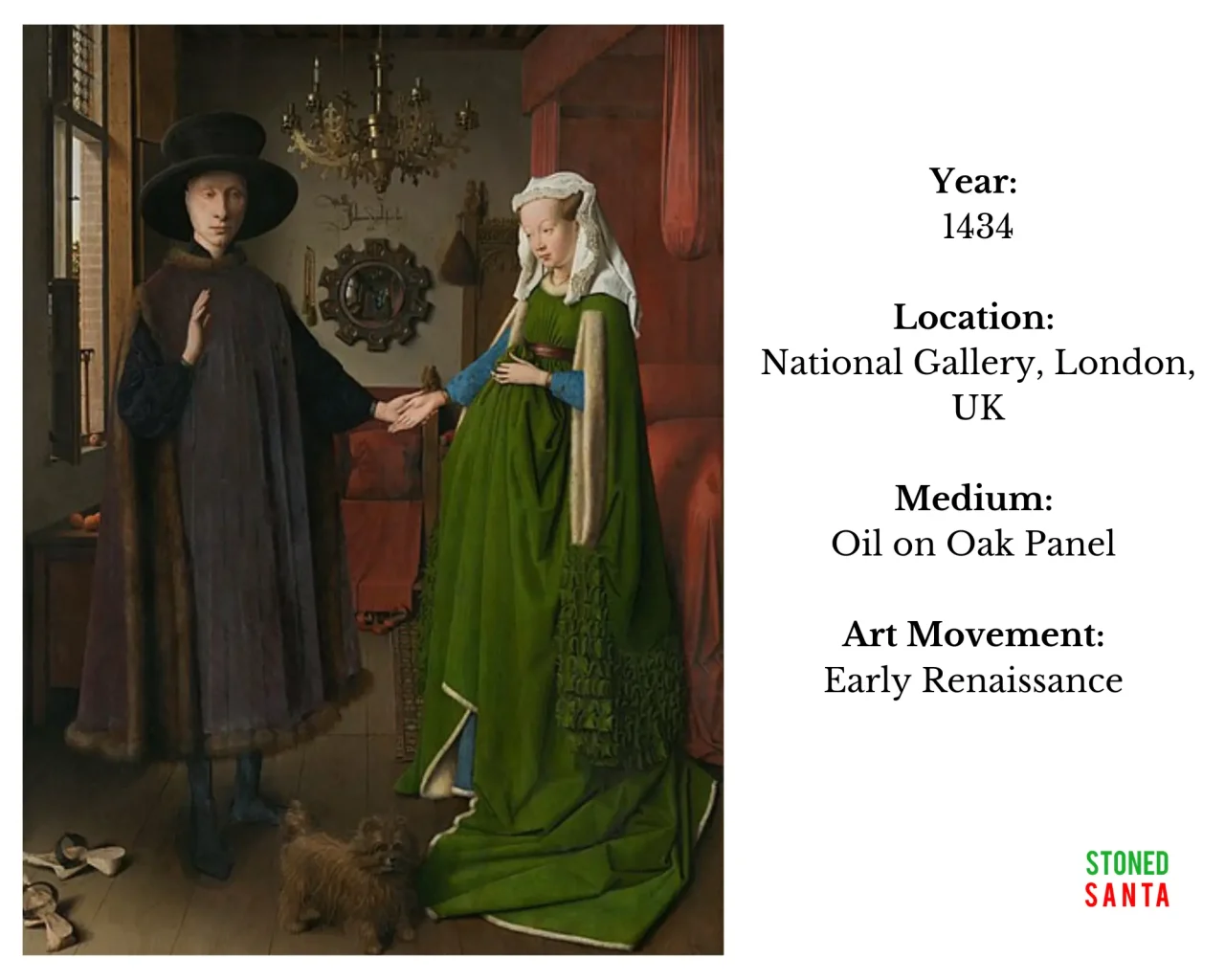
While some claim the oil painting to be symbolising the Italian merchant Arnolfini’s Marriage, some claim that it portrays pregnant Mrs Arnolfini, who had died during childbirth, yet some others assert that painting pregnant women during the early Renaissance was considered indecorous, and it is just the excess fabric creating a domelike silhouette of the lady.
Likewise, with the unresolved mystery, the painting continues to intrigue the viewers. It is this aspect of the oil painting that makes it so fascinating.
The painting also showcases the oil glazing technique used by Van Eyck to create texture and depth and highlight realism. The close attention to precise details such as the texture of the fabrics, the glazing eyes and the position of the lady’s hand and the reflective mirror and chandelier also signify the focus on meticulous details during the early Renaissance.
The Final Brushstroke!
Are you intrigued by the fascinating timelessness and ways of art serving as a peephole to history, culture and perception of different ages, emotions and art techniques from different eras? Do you feel inspired by these iconic masterpieces of art evoking mystery and brilliance?
Your wait is surely over now! The artists at Stoned Santa bring history to life through oil paintings and furnish your personal or professional space with the magic of oil painting.
Hurry up, then! Spot your favourite corners, ready to be adorned with oil paintings, and contact Stoned Santa Now!

Rupali Dubey
Content Strategist
Editors Note –
This blog highlights how the unique art techniques and stories associated with these paintings signify the enduring enigma of the craft of oil painting, whose beauty could not be replicated even by advanced photography. These famous oil paintings have transcended ages and continue to inspire artists and art lovers. Experience the magic of this timeless beauty by ordering your oil painting from Stoned Santa!
Looking for the perfect gift?
Look no more, our gift experts will get in touch with you and help you with all your requirements.